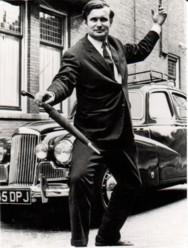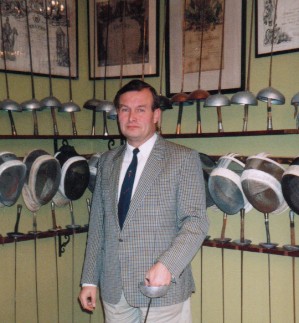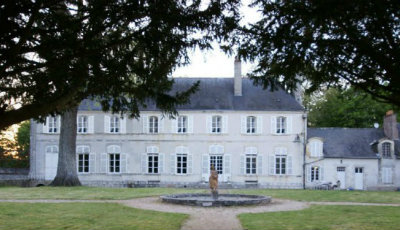The Collector
The life of Rudi van Oeveren looks like a game of Monopoly. From Holland to Israël and England, training national teams, passing through Budapest, New York, Paris and Djakarta, this master of arms has drawn his sword everywhere. Always looking for new horizons, the fencing dutchman owned several true fencingrooms. The last privatly owned british fencingroom was established in the heart of Newcastle upon Tyne at the Haymarket. Not far away from Shotleybridge, where in the eighteenth century blades were made… This traveling always served his fencing.


“Observing different people, in different places, understanding their way of fencing. Show me how you fence and I tell you who you are .. , feeling a hand, a technique, a tactique, a sense of distance. One has to be artistic and shrewd at the same time.”
“Since the egyptians 1190 B.C., from generation to generation, fencing has never left man. The French and Italians have been very talented for this sport. What they were for the point, the Hungarians were for the edge. The fencingmaster Roger Crosnier made me thinking of living in the Loire-Valley. This great theorist of fencing spent his last days at Chinon. He fenced a way that made you think twice, but it was impregnated with elegance and lightness.”says the man who lives by the sword.
Fencing-bags and weaponcases were put down at the Château des Sablons in Bourgueil for 16 years. But this globe-trotter wanted to get closer to Paris and have a full-sized fencigroom. So after years of searching he found his last treasure in Meung-sur-Loire. A lovely manor with 11 ha of land with a modern (old-style) fencingroom.. Now sabres-rattle and epéeguards sing their carillon-song at the fencing-salle of Clos de Bel Air. People of all ages try their first steps, hesitating attacks becoming cunning offensive actions, secret strokes turning into common place behaviour.
On top of this, the castle houses the largest collection on fencing in the world. Some 600 engravings, prints and paintings on the subject. A special division dedicated to women, fencing or duelling or just showing of their pretty costumes and weapons….
“Never underestimate a woman with a sword in het hand”, explains maître van Oeveren, pointing out an 18th century silk-woven image of women fencing foil with the fencingmaster at their side. “Women will always be dangerous and unpredictable(La donna e mobilé). Their advantage is their stong intuition, plus their long experience. And further more”, he adds jokingly, ” I have never heard of women playing soccer for more than 3 centuries”.
Special thanks
I would like to thank the following British people for their support in establishing my museum and the gifts that are on show in my museum: Mrs. Rosalind Anderson. The B.A.F., British Academy of Fencing Masters. Mr. Stan Calvert, Head Physical Education Dept. University of Newcastle Upon Tyne. Mrs. Daphne Foster-Smith. Mrs Hilda Foster, Secretary Me. Van Oeveren School of Fencing. Dame Mary Glen-Haig, O.B.E. Mr. Robert (Bob) Kelly. The Laing Art Gallery, Newcastle Upon Tyne. Dr. Cyrill Lippman. Dr. Howard Raine. Mrs Julia Raine. Mr. John Stansfield, Secretary Me. Van Oeveren School of Fencing. Mr. Geoffrey Taylor, Head Physical Education Rutherford Technical College Newcastle Upon Tyne. Mr. John Torday, Chairman Me. Van Oeveren School of Fencing. Mr. Collin Towers, Head Physical Education Carlisle College.
My very special thanks go to : Mr and Mrs Ian and Marjory Swanson, and their daughter, Jane Swanson. Without their support and friendship, life would not have been the same.
I would like to thank the following Isreali people: Dr. Amnon Karmi. Mr. Eli Perl.

